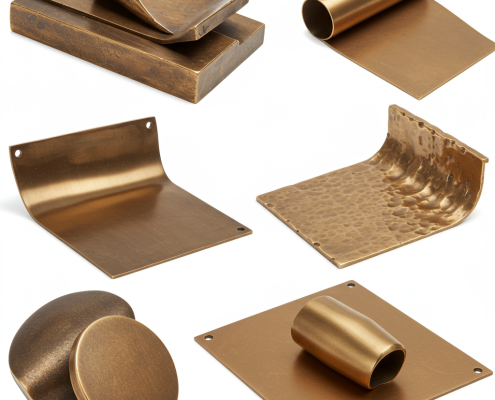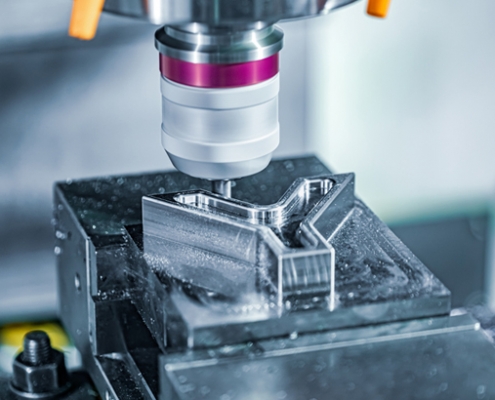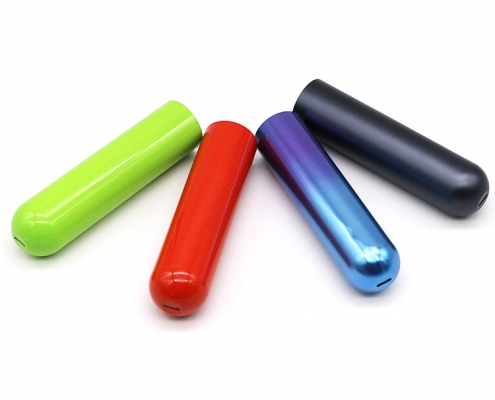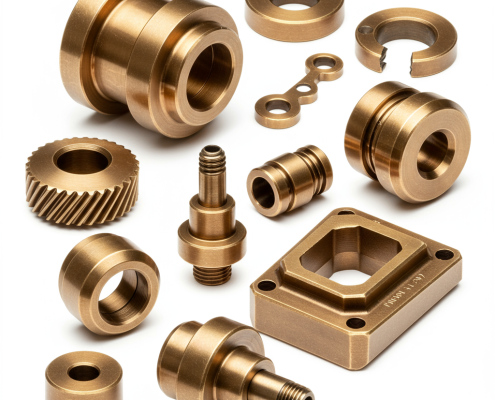Bronze Machining: Techniques, Types, Uses and Best Practices
Struggling with tool wear, poor surface finish, or bronze alloy selection in machining? This guide will help you master CNC bronze techniques to save time, cost, and headaches.
Bronze machining involves the precision cutting and shaping of various bronze alloys using CNC bronze machining processes. In order to obtain accurate, high-quality parts, the selection of the right bronze grade, tooling and feed rates, as well as specialized cooling and finishing strategies are essential.
Let’s explore everything you need to know to machine bronze cnc efficiently and cost-effectively.
What Is Bronze Machining?
Machining bronze refers to the use of CNC or manual processes to cut, mill, drill, or shape bronze alloys into precise components. Due to its excellent wear resistance and low friction, machined bronze is ideal for high-performance parts in sectors such as automotive, aerospace, and marine engineering. The use of CNC machining bronze ensures high repeatability, tight tolerances, and fast production cycles.

Historical Context of Bronze in Machining
Bronze is one of the oldest known metals, used as early as 3000 BCE. Originally chosen for its strength and corrosion resistance, it played a key role in weaponry, tools, and art. As machining evolved, bronze machining transitioned from casting-only to precision CNC applications. Today, bronze alloys for offshore oil & gas and aerospace bronze highlight its modern industrial importance.
What Types of Bronze Alloys Are Commonly Machined?
Bronze alloys are primarily copper-based with varying additions like tin, aluminum, silicon, and phosphorus. These combinations change the material properties of bronze, such as hardness and corrosion resistance.
| Bronze Type | Major Alloying Element | Properties | Typical Applications |
|---|---|---|---|
| Phosphor Bronze | Tin (Sn), Phosphorus (P) | High fatigue strength, excellent wear resistance, good corrosion resistance, and good electrical conductivity. | Springs, bearings, electrical connectors, and switches. |
| Aluminum Bronze | Aluminum (Al) | Exceptional strength, superior corrosion resistance, especially in marine and chemical environments, good wear resistance. | Marine components, pumps, valves, bearings, and heavy-duty machinery. |
| Bearing Bronze (SAE 660) | Tin (Sn), Lead (Pb) | Self-lubricating, excellent wear resistance, suitable for high-load, low-speed operations, and easy to machine. | Plain bearings, bushings, and gears. |
| Silicon Bronze | Silicon (Si) | High strength, excellent corrosion resistance, good welding characteristics, and good heat resistance. | Pipe fittings, architectural elements, welding electrodes, and electrical switches. |
| Matelac Silver Bronze | Silver (Ag), Tin (Sn) | Decorative with long-lasting shine, strong anti-microbial properties, and excellent wear resistance. | Decorative items, medical tools, coins, and cutlery. |
| Manganese Bronze | Manganese (Mn), Aluminum (Al) | High strength, excellent impact resistance, superior corrosion resistance, suitable for high-load applications. | Ship parts, heavy machinery components, propellers, and sleeves. |
| Cupro-Nickel Bronze | Nickel (Ni), Tin (Sn) | Exceptional seawater corrosion resistance, moderate strength, low thermal and electrical conductivity. | Marine engineering, heat exchangers, and piping systems. |
| Sculpture Bronze | Tin (Sn) | Easy to cast, highly workable, smooth surface finish, ideal for artistic and decorative uses. | Sculptures, artwork, and monuments. |
Each bronze alloy is designed to meet specific demands such as strength, wear resistance, corrosion resistance, or decorative appeal. Selecting the right bronze type depends on the application’s requirements and environmental conditions.
More Resources: Brass vs Bronze vs Copper
What is the Difference Between Brass and Bronze?
What Are the Techniques for CNC Machining Bronze?
There are various CNC techniques tailored to machine bronze effectively. Key processes include:
CNC Turning
CNC Turning is ideal for machining cylindrical parts like bushings, shafts, and bearings. This technique involves rotating the workpiece while a cutting tool shapes its outer or inner surfaces. Bronze turning requires sharp carbide tools with a positive rake angle to reduce cutting forces and minimize heat generation. Proper use of coolants is crucial to avoid work hardening, ensuring smooth finishes and accurate dimensions.
CNC Milling
CNC Milling is commonly used to produce complex shapes such as flanges, gears, and valves. In this process, the cutting tool rotates while the workpiece remains stationary or moves along specific axes. For bronze, 2-3 flute carbide tools are recommended to efficiently evacuate chips and prevent heat buildup. Adjusting cutting depth and feed rates is key, especially when working with harder alloys like aluminum bronze.

CNC Drilling
CNC Drilling is essential for creating precise and clean holes in bronze components. This technique requires high-quality cobalt high-speed steel (HSS) drills or carbide drills for harder alloys. Spiral-fluted drills are effective for chip clearance. Coolants must be used consistently to prevent overheating and maintain hole accuracy, particularly in applications requiring tight tolerances.
Tapping
Tapping is used to create internal threads in bronze parts, such as fasteners and connectors. It involves rotating a tap into the pre-drilled hole to cut threads. Taps designed for non-ferrous metals, combined with lubricants like cutting oil, ensure smooth threading with minimal tool wear. Proper alignment is critical to avoid damaging the threads or the workpiece.
Parameters for Bronze Cutting
| Parameter | Recommended Range | Details and Tips |
|---|---|---|
| Cutting Speed | 90–210 ft/min (27–64 m/min) | Adjust based on bronze hardness; slower speeds for tougher alloys like aluminum bronze. |
| Feed Rate | 0.004–0.012 in/rev (0.10–0.30 mm/rev) | Use lower feed rates for finishing passes to achieve better surface finish. |
| Tool Material | Carbide or Cobalt High-Speed Steel (HSS) | Carbide tools last longer and resist wear when machining harder alloys. |
| Coolant | Required (Water-Soluble or Cutting Oil) | Keeps the material cool, prevents work hardening, and extends tool life. |
Top Grades of Bronze for CNC Machining
Below is a detailed explanation of top bronze grades suitable for CNC machining, including their composition, machinability, and common applications.
| Grade | Composition | Machinability | Typical Uses | Key Properties |
|---|---|---|---|---|
| C93200 | Tin, Lead, Zinc | High | Bearings, bushings, gears | Excellent wear resistance, self-lubricating, easy to machine, ideal for high-load, low-speed applications. |
| C95400 | Aluminum, Iron, Manganese | Medium | Pumps, marine hardware, valve components | High strength, exceptional corrosion resistance, especially in marine environments. |
| C51000 | Phosphor Bronze (Tin, Phosphorus) | Good | Springs, electrical connectors, fasteners | High fatigue resistance, good machinability, excellent electrical and thermal conductivity. |
| C63000 | Nickel-Aluminum Bronze | Tough | Aircraft parts, naval hardware, heavy machinery | Outstanding strength, excellent corrosion resistance, particularly in saltwater or chemically aggressive environments. |
| C54400 | Phosphor Bronze (Tin, Lead) | Very High | Electrical contacts, precision components | Extremely machinable, good wear resistance, excellent for tight tolerances and fine details. |
| C90300 | Tin Bronze | Medium | Bearings, bushings, marine fittings | High strength and wear resistance, suitable for underwater or corrosive applications. |
What Surface Finishes Are Available for Bronze Machined Parts?
To enhance both appearance and function, machined bronze parts undergo finishing processes like:
Polishing
Polishing enhances the aesthetics and smoothness of bronze parts by removing surface imperfections and creating a shiny, reflective finish. This process is particularly popular for decorative applications, such as luxury accessories and sculptures. Polished bronze not only looks elegant but also resists tarnishing better when paired with protective coatings.
Bead Blasting
Bead blasting uses fine abrasive particles to add a uniform, matte texture to the bronze surface. This finish is ideal for components requiring a subtle, non-reflective appearance, such as industrial parts or modern architectural elements. Bead blasting also helps to conceal minor machining marks and creates a consistent surface for further treatments like coatings or paints.
Electroplating
Electroplating involves adding a thin layer of another metal, such as gold, silver, or nickel, onto the bronze surface. This process improves corrosion resistance and can enhance the appearance of the part. For example, gold-plated bronze is often used in jewelry, while nickel plating provides a sleek, industrial look for machinery components.
Patina Finishing
Patina finishes artificially oxidize the bronze surface to create an antique or weathered look. This method is widely used in art and decorative applications, giving parts a unique, aged character. The patina can range from green (similar to natural verdigris) to brown or black, depending on the chemicals used.
Clear Coating
A clear lacquer or epoxy coating is applied to protect the bronze from oxidation and tarnishing without altering its natural appearance. This finish is common for outdoor sculptures, architectural elements, and other applications where maintaining the raw bronze look is essential.
Anodizing Alternative
Although anodizing is specific to aluminum, bronze parts can achieve similar protective finishes using chemical treatments. These treatments enhance surface hardness and corrosion resistance while offering a range of color options for customization.

Surface finish must match function – especially for luxury accessories or visual applications like Matlack Silver Bronze parts. We at VMT offer over 40 surface treatments to enhance the performance of your copper machined parts.
How to Save Costs in Bronze Machining?
Saving money in CNC machining bronze projects can be achieved by:
1. Choosing Free-Machining Alloys
Selecting bronze alloys with high machinability, such as C932, significantly reduces tooling wear and machining time. These alloys are easier to cut, resulting in lower operational costs and faster production cycles, especially for large-volume orders.
2. Batch Production
Producing parts in batches lowers per-part costs by spreading setup and programming expenses across multiple units. Batch production also allows for more efficient use of materials and machinery, minimizing downtime and reducing scrap rates.

3. Tool Path Optimization
Efficient tool path planning minimizes material waste and reduces tool wear. Advanced CAM software can optimize cutting strategies, ensuring smoother operations and shorter machining times. This approach not only saves costs but also improves part consistency and quality.
4. Design for Manufacturability
Simplifying part designs to eliminate unnecessary complexity reduces machining time and tooling costs. Features like deep pockets, intricate contours, or tight tolerances should be avoided unless absolutely necessary, making the part easier and cheaper to machine.
5. Partnering with Experienced Manufacturers
Working with skilled CNC machining experts, like VMT, ensures that potential issues are addressed early in the process. This reduces the risk of part rejections, costly rework, or material waste, ultimately leading to a more efficient and cost-effective production process.
Applications of Machined Bronze Parts
Machined bronze parts find use in various industries due to their versatility, durability, and excellent material properties. From automotive to medical applications, bronze components offer unique advantages such as wear resistance, corrosion resistance, and precision machinability. Below is a detailed overview of key applications across industries:
| Industry | Applications | Key Benefits |
|---|---|---|
| Automotive | Transmission components, bushings, valve guides | High wear resistance, self-lubricating properties for reduced maintenance. |
| Aerospace | Landing gear, connectors, high-strength fittings | Excellent fatigue resistance and strength, ideal for high-stress environments. |
| Marine | Propellers, pump parts, valves | Exceptional corrosion resistance, especially in saltwater environments. |
| Medical | Precision instruments, surgical components | High precision machining possible, non-reactive and biocompatible materials. |
| Electronics | Springs, connectors, terminals | Good electrical conductivity and durability, ensuring long-lasting performance. |
| Industrial | Gears, bearings, seals | High load capacity and resistance to wear, ideal for heavy-duty machinery. |
| Architecture | Decorative fittings, sculptures | Aesthetic appeal combined with long-term corrosion resistance and durability. |
Start your CNC Machining Bronze Project with VMT
VMT is a trusted manufacturer with over 15 years of experience in precision machining. Equipped with more than 100 machines, including advanced 5-axis CNC centers, we deliver high-quality bronze CNC parts within 24 hours. From bronze machine casting components to polished, high-end fittings, we provide free design consulting, ultra-tight tolerances down to 0.005 mm, and expert-controlled surface finishes.
Frequently Asked Questions About Bronze Machining
Is Bronze Difficult to Machine?
Bronze is generally not difficult to machine, but the ease depends on the alloy. Phosphor bronze and silicon bronze are easier, while aluminum bronze is tougher due to its high strength. Sharp cutting tools and adequate cooling are essential. Proper feed rates and speeds prevent tool wear and maintain surface quality.
Why is Bronze No Longer Used?
Bronze is still used but has declined in some industries due to the emergence of cheaper, stronger, and lighter materials like aluminum and steel. Its higher cost and weight limit its use in large-scale applications, though it remains favored for corrosion resistance and aesthetics.
Do You Need to Re-oil Oil-Impregnated Bronze After Machining?
Yes, machining can strip the surface oil from oil-impregnated bronze. Re-soaking the part in high-quality oil restores its self-lubricating properties, ensuring optimal performance and reducing wear.
How Many Flutes to Machine Aluminum Bronze?
Carbide end mills with 2-3 flutes are ideal for aluminum bronze. These flutes balance chip evacuation and cutting rigidity, reducing heat buildup and tool wear.
How to Machine Aluminum Bronze?
Aluminum bronze requires sharp carbide tools with positive rake angles. Use low cutting speeds, high feed rates, and sufficient coolant to prevent work hardening. Proper toolpath strategies can improve machining efficiency.
How to Machine Bronze Bushings?
Machining bronze bushings involves using sharp tools with positive rake angles. Moderate speeds and slow feed rates are ideal. Coolant helps prevent overheating, and precise measurements ensure proper tolerances.
How to Machine Oilite Bronze?
When machining Oilite bronze, use sharp tools and moderate speeds. Minimize heat generation to preserve its oil-filled structure. Avoid excessive force, and re-oil the part after machining to maintain lubrication.



